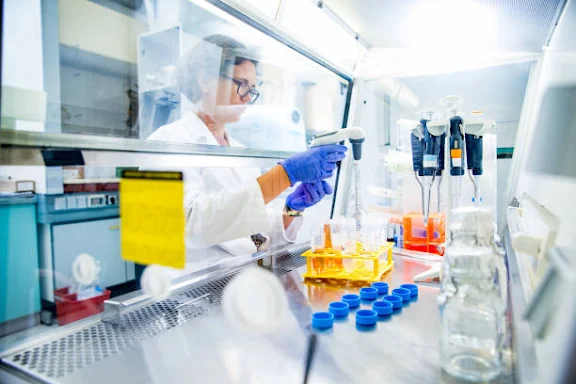Researchers use biosafety cabinet to protect themselves from harmful chemicals during experimentation. It preserves the exact quality of the sample being tested by filtering out the inflow and exhaust air. Biosafety cabinets come in several designs and provide various levels of protection to the investigator and the research material. So, let’s explore the three classes of biosafety cabinets:
Class 1 cabinet
This ventilated cabinet provides protection to the personnel and environment from hazardous laboratory substances. Every accessory comes with a constraint, and a class 1 cabinet isn’t an exception in this regard. Their airflow pattern is similar to a fume hood with a HEPA filter at the exhaust outlet. Being the most basic biosafety cabinet, class 1 cabinets are used to enclose certain equipment like centrifuges. The cabinets of this class can either be ducted or not ducted.
Class 2 cabinet
Biosafety Class 2 cabinets have a fan mounted at the top that emits sterile air over the experiment area. The makeup air of a class 2 cabinet is also HEPA-filtered like the class 1 cabinet type. Class 2 cabinets are further divided into five types based on their embedded mechanism and exhaust system type:
Type A1: These cabinets have an inflow velocity of 75ft/min.
Type A2: A2 cabinets come with an inflow velocity of 100 ft/min.
Type B1: B1 cabinets use single-pass airflow to curb the emission of hazardous gases.
Type B2: Here, the air is drawn from an opening that is positioned at the top of the cabinet.
Type C1: C1 cabinets function by implementing the single-pass airflow system. In this type, the cabinets shuffle the air by blending it with the downflow air.
Class 3 cabinet
Class 3 ventilated cabinets are leak-tight, unlike class 1 and 2 cabinets. Here, the air enters or leaves through a HEPA filter. Class 3 biosafety cabinet have rubber gloves attached to the system that is used during cabinet operations. One unique feature of this cabinet is that it has a transfer chamber that sterilizes the materials in the glove box. The gloves don’t allow contact between the samples and the operator. Biosafety class 3 cabinets are used in particular laboratories where the lab equipment is manufactured inside the chamber. With all these designs and structural features, maximum protection is guaranteed to the sample, the operator, and the environment.
As you can understand, these cabinets are extremely useful in research labs as they offer optimum protection to the investigator, sample, and environment. Not everyone can use these cabinets as they have a specific way of functioning. Undoubtedly, these high-end accessories have simplified the work of researchers in more ways than one.
Are you looking for the best biosafety cabinet to meet your research needs? If you feel so, then www.igenels.com has all the answers for you. In this platform, you get access to a wide variety of lab equipment and accessories at competitive rates. So, why think? Buy the one that fits your requirements.





No comments:
Post a Comment